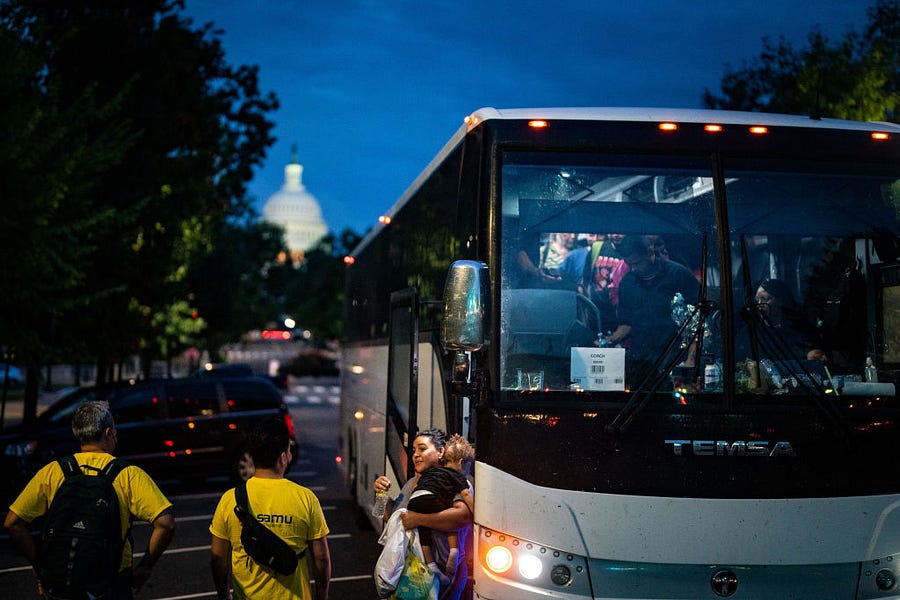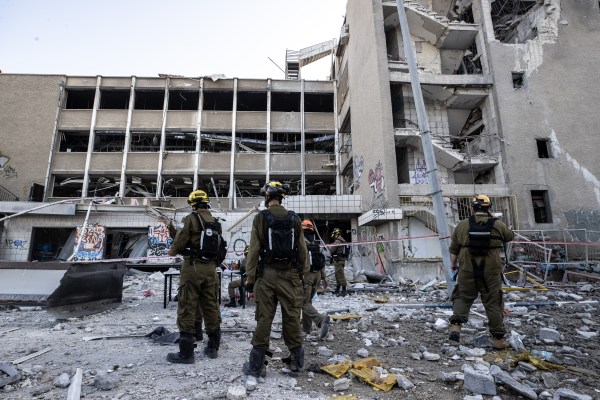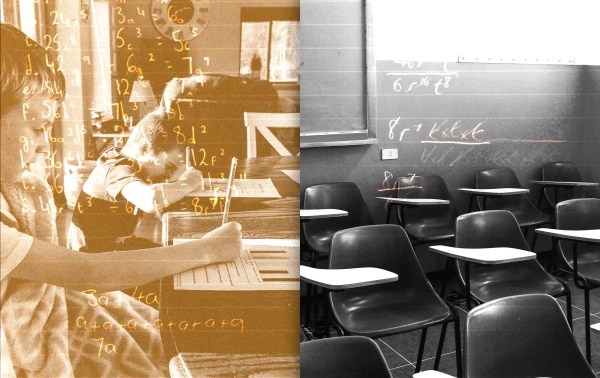Five kids in rumpled sweatpants and oversized sweatshirts step off a bus within view of the U.S. Capitol. A couple of them, hovering near their parents, flash shy grins and wave at a man hefting a news camera.
About 35 adults lumber off the bus too. No one carries luggage: A few shoulder small drawstring backpacks. Others grip plastic bags. Many carry large manilla folders stuffed with immigration paperwork.
Only a handful of strangers wait to welcome the bus that departed Laredo, Texas, 36 hours before—five volunteers, two employees with the nonprofit SAMU First Response, and a smattering of reporters. Volunteers step forward to greet migrants: “Hola! Buenos días!”
It’s been four months since Texas Gov. Greg Abbott first sent a bus bearing migrants toward D.C. to draw attention to high levels of attempted crossings at the U.S.-Mexico border. He recently boasted of sending some 10,000 migrants toward the capital, New York City, and Chicago. In May, Gov. Doug Ducey of Arizona launched a similar program and has transported more than 1,500 migrants to D.C. Abbott specifically targeted sanctuary cities—those with laws discouraging local law enforcement from cooperating on deportations with Immigration and Customs Enforcement (ICE)—as well as those with Democratic mayors.
Since then, the government of the District of Columbia—which meets both of Abbott’s criteria—has been in a standoff with the Biden administration over who should take responsibility for the crisis. A patchwork of local volunteers, nonprofits, and faith organizations has taken the lead to meet disembarking migrants, find them shelter, and offer further aid.
Last week, the city blinked: Mayor Muriel Bowser declared Thursday that the busing constituted a public emergency and said the city will spend $10 million to create an Office of Migrant Services that will work with SAMU and other relief groups, schedule city officials to meet buses, and offer migrants further aid. The city also plans to build a temporary shelter for the migrants. Bowser plans to call on the city council to vote on emergency legislation to authorize the office long-term. But it’s not yet clear when the office will be operational.
In 2018, Bowser reaffirmed D.C.’s status as a sanctuary city after facing complaints from local activists. “We are not a country of fear and cruelty,” she said at the time about former President Donald Trump’s immigration policies. But now she faces pressure from D.C. councilmembers and activists for being slow to respond to the migrants showing up in her city. “It’s not the top of her political priorities and it shows,” one volunteer told The Dispatch.
Abbott blamed “open-border advocates in other parts of the country,” for a record-breaking surge in asylum-seeking migrants pressuring his state’s infrastructure. He took particular aim at Biden’s efforts to end a Trump-era public health emergency order, known as Title 42, used to expel migrants to Mexico without processing their asylum claims. A federal court blocked Biden’s move to end the policy.
Some say the bus program is an inhumane—and ineffective—way of scoring a political point. “If Abbott’s intention was to hurt Biden, I can tell you right now he is sleeping fine,” Abel Nuñez, executive director of the Central American Resource Center (CARACEN), an immigration-focused nonprofit, said.
The city and Biden administration have offered behind-the-scenes assistance, though advocates say it falls short of addressing migrants’ needs: Since June, the Federal Emergency Management Agency (FEMA) has given over $2 million in humanitarian aid to SAMU. The city’s Department of Human Services also provided coronavirus test kits and as well as some accommodations for migrants who have lingered in the city. D.C. Attorney General Karl A. Racine, a Democrat, created a $150,000 grant program for nonprofits helping the migrants.
But up to this point, government officials—either state or federal—have been notably absent from the on-the-ground response. Buses arrive as early as 6 a.m., and sometimes close to midnight. The Pentagon rebuffed two requests from Bowser to respond, citing organizations already responding to the situation and adding that troops are not trained for that mission.
Congress has largely ignored the situation, though D.C. Delegate Eleanor Holmes Norton, a Democrat, introduced an emergency bill in August to provide $50 million to FEMA to provide assistance to migrants. It’s unclear whether the legislation will advance.
On Thursday, one of the nonprofit workers meeting the bus asks the travelers to raise their hand if their final destination is somewhere else in the States. Almost every hand shoots up. Thanks to the Republican governors of Texas and Arizona, they are several hundred miles closer to where they want to go—typically wherever other family members live.
After crossing the border, migrants who go through initial immigration processing are temporarily paroled into the country, with orders to appear for an asylum hearing later. Once they’re on the bus, they can exit whenever the bus makes a stop, and many have, in states including Tennessee and North Carolina.
Texas taxpayers—and supporters who have donated to the effort—are picking up the tab: By the end of August, Abbott’s migrant busing policy had cost Texas upward of $12 million, the Texas Tribune reported, or about $1,400 per migrant—enough to book each migrant plane ticket. The money went to pay a private charter bus company, Wynne Transportation.
En route, they get military rations for meals.
Coordinators are never sure exactly how many migrants will step off the buses from Texas.
Tatiana Laborde, managing director for SAMU First Response, said her group usually gets about a 24-hour warning before buses arrive: “There’s really not much planning that we can do. Which makes the logistical part extremely challenging.”
Arizona officials have done a better job coordinating with NGOs, advocates said, including giving more detailed information about who is on the bus and what the estimated time of arrival will be. Migrants coming from Arizona have also received better food.
SAMU sends most migrants to a respite center in Montgomery County, Maryland, where they can stay up to three days. The shelter offers meals, wifi, and sleeping arrangements. But it only hosts 50 people at a time. Others stay in churches, volunteers’ homes, or hotels.
The city is housing about 350 migrants in D.C. hotels.
But as shelters fill up, volunteers struggle to connect every migrant with temporary shelter, leading to reports of migrants sleeping outside of Union Station or hotels.
Though uncertainty awaits those who arrive, no evidence suggests migrants are boarding buses unwillingly. Bowser claimed Thursday that “some are being tricked or lied to,” but could not back up those allegations when a reporter asked for more information.
The last to complain about the busing program are the migrants themselves, Nuñez said: “The people on the buses are very thankful to [Gov. Abbott.]”
While many migrants treat D.C. as a stop on their way to other parts of the country, more—an estimated 20 percent according to SAMU—are settling in for the longer-term. And with the program showing no signs of slowing, advocates argue it is long past time for officials to wake up to that reality.
One volunteer, Bilal Askaryar with the Women’s Refugee Commission, met buses late Wednesday night, then was up again by 6 a.m. to meet the bus Thursday.
He wants elected officials to follow the example of volunteers like him: “We’re ready to welcome these people.”






Please note that we at The Dispatch hold ourselves, our work, and our commenters to a higher standard than other places on the internet. We welcome comments that foster genuine debate or discussion—including comments critical of us or our work—but responses that include ad hominem attacks on fellow Dispatch members or are intended to stoke fear and anger may be moderated.
With your membership, you only have the ability to comment on The Morning Dispatch articles. Consider upgrading to join the conversation everywhere.